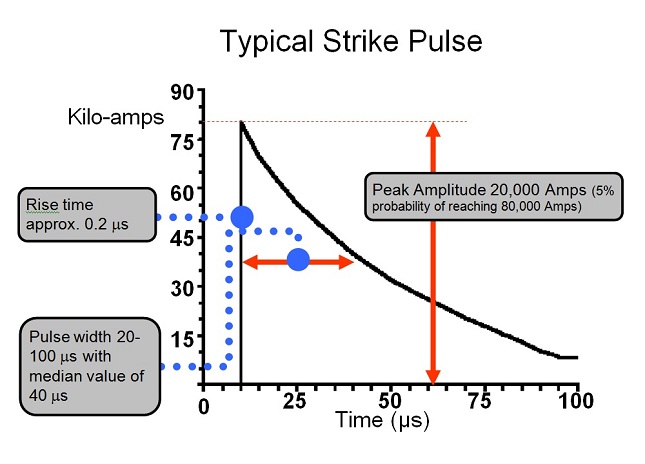
In the course of roaming around the country doing trade show exhibits, presenting to SBE chapters and visiting customers, I still find time for the occasional site visit or troubleshooting call. My field service background can be a blessing and a curse, at times!
I’m pleased to report that I’ve noticed more and more sites are using AC power line protectors (surge protectors) as part of their lightning protection strategy. This is a good thing, as a properly installed surge protector can provide a very significant advantage when it comes to resisting the transients tossed down the various conductors at a transmitter site.
Unfortunately though, I’ve noticed these surge protectors are frequently NOT installed in the location where they might best serve the site. Often, they are located near the coax entry point, or near the transmitting equipment itself. The logic being that them keeps them as close to the reference ground point as possible, in order to provide the best path to ground when the MOVs clamp.
The best location, however, is as close as physically possible to the AC entrance – or to the service to the transmitter room, if the site entrance is in a different location. Ideally, a shunt type surge protector (MOVs to ground, with no series components) will be on a dedicated disconnect, so that it can be removed from service for maintenance or repair without disrupting the operational status of the rest of the facility. Disconnects should be rated higher than the fusing components in the surge protector (for example, our in-house manufactured surge protector has the MOVs fused at 30A, so an external disconnect should have a rating of 40A or higher).

The reason for keeping the surge protector as close as possible to the electrical entrance is quite simple. Because lightning has a fast rise time (0.2-0.4usec) and a slower decay (nominally 40usec), there are several higher frequency components than simple DC, thus the inductance of wiring to protection devices comes into play. Keeping this inductance as low as possible is key – and since copper ground strap has a much lower inductance per foot than electrical wire used to connect the surge protector, keeping the electrical wire as short as possible will provide much better protection.
So, yes, having a good ground connection to your surge protector is key. Regardless of whether you have a series type surge protector or a shunt type, keeping it located as close as physically possible to the AC entrance will dramatically improve your protection, by reducing the inductance of AC wiring to the device and (in the case of a series protector) increasing the inductance of the wiring to the transmitter, or other device(s) being protected. Keep in mind that surge protectors are bi-directional… the majority of work they do is not on AC power line surges, but on tower strikes where ground potential spikes high as lightning discharges down the tower, across ball gaps, etc. In this case, ground can spike several kV above AC line voltage – and the resulting potential difference can kill power supplies in equipment, if you don’t have properly installed surge protection. In this situation, the purpose of the surge protector is to clamp and direct the surge through the MOVs and out on the AC lines – where there are thousands of miles of copper for the surge to dissipate through.

From left to right: Where the surge protector is and where it should be!
One other note – and mentioned in a previous issue – make sure that there are ferrites on all AC feeds to equipment. This serves to make the path through the equipment look like an even higher impedance to a lightning strike and further direct any surges through the ground system to the surge protector and out on the AC lines, or vice versa. I like to say that we can’t control where lightning will strike – but we can definitely have a say in where it goes once it hits… through the equipment is not the best solution!!!
For those who will be in Dallas for the Radio Show next month, I hope to see you there, if not, I’ll be in Madison in October.
Until next time, play safe and have fun!
Jeff
Jeff Welton, has worked with Nautel for 25+ years. He is currently the Nautel Sales Manager for U.S. Central Region but previously he spent 16.5 years as a Nautel Customer Service Technician.
Submissions for this Tips ‘n Tricks column are encouraged and if published you’ll receive a Nautel T-shirt. Submissions should be typed and emailed, with high resolution photos, to [email protected] using the subject line Tips ‘n Tricks.

